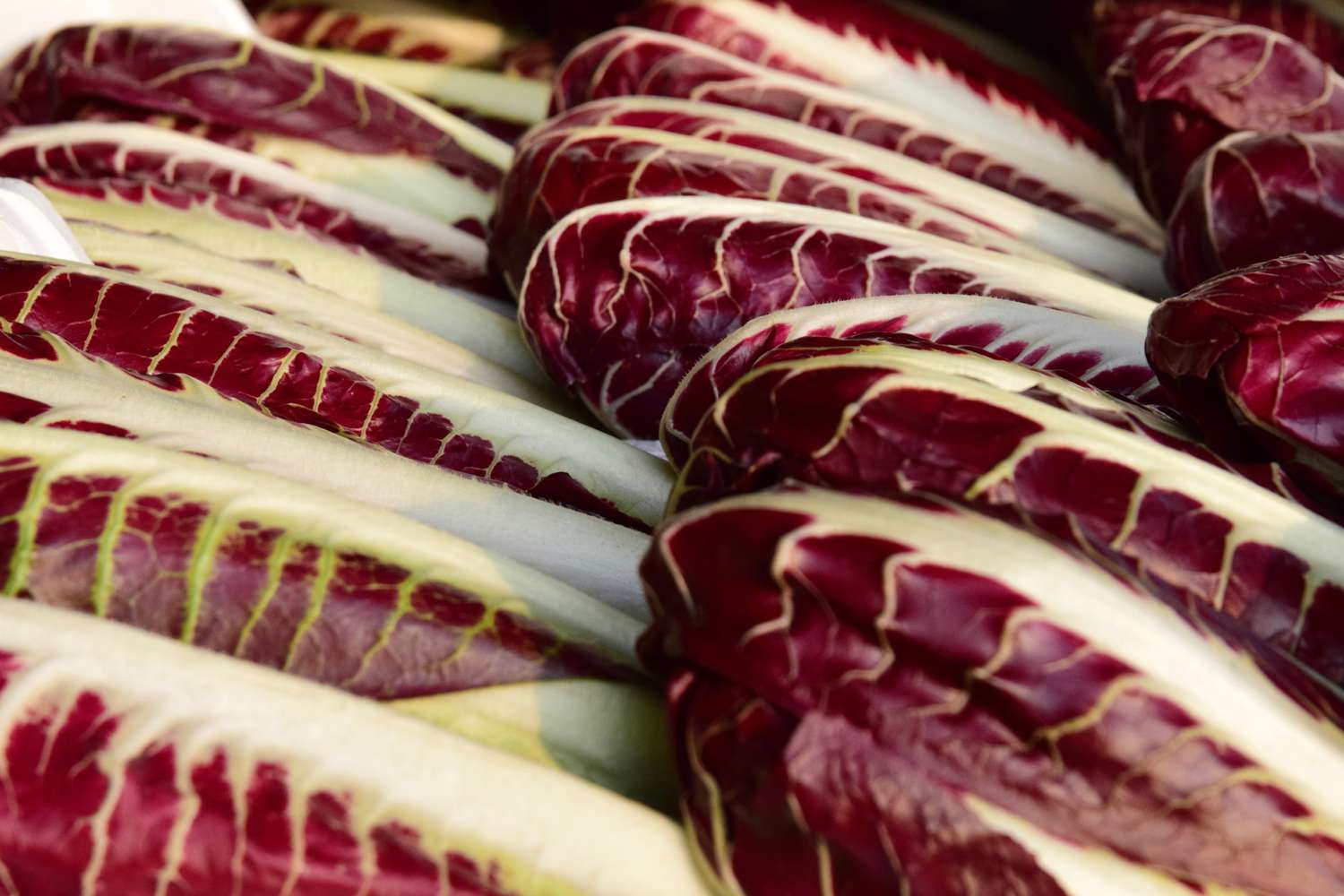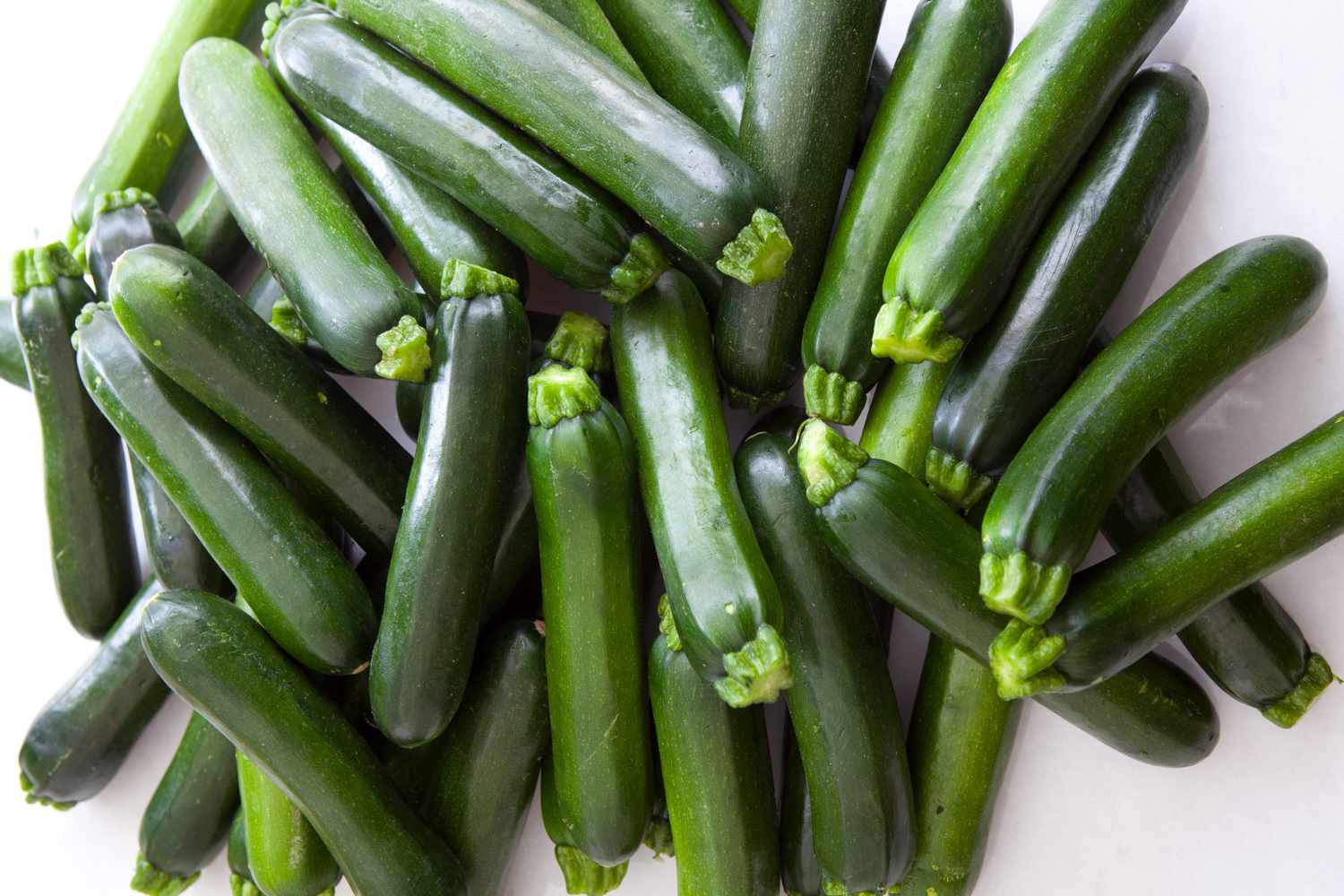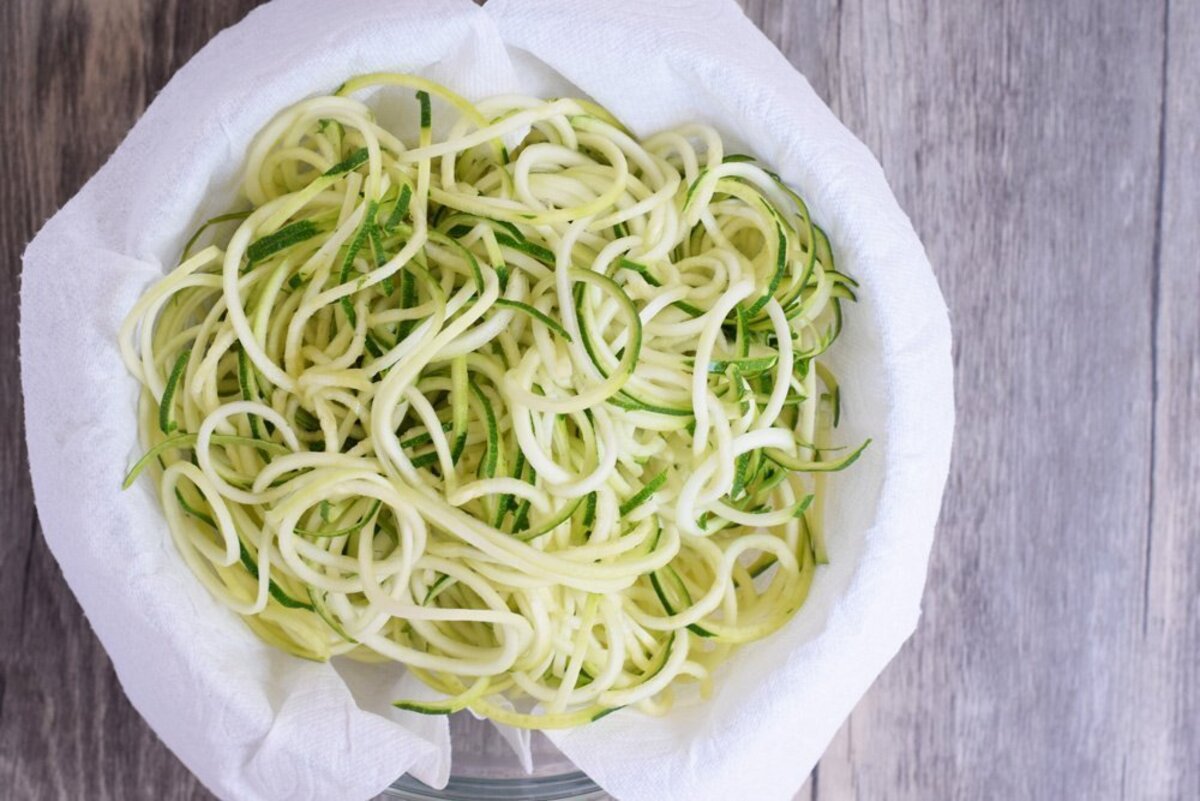

Articles
How To Store Radicchio
Modified: December 7, 2023
Learn the best methods for storing radicchio in this informative article. Keep your radicchio fresh and delicious for longer with these tips.
(Many of the links in this article redirect to a specific reviewed product. Your purchase of these products through affiliate links helps to generate commission for Storables.com, at no extra cost. Learn more)
Introduction
Welcome to the world of radicchio! This stunning and vibrant vegetable is known for its bitter flavor, crisp texture, and beautiful purple leaves. Whether you’re a seasoned radicchio enthusiast or a curious beginner, one thing is certain – knowing how to properly store radicchio is key to maintaining its freshness and flavor for as long as possible.
In this article, we will guide you through the different methods of storing radicchio, whether it’s whole heads, cut or sliced pieces, or even freezing for long-term preservation. We’ll also share some tips on how to revive wilted radicchio, so you can make the most out of this versatile and nutritious vegetable.
So, let’s dive into the art of radicchio storage and ensure that you have fresh, crunchy, and vibrant leaves whenever your taste buds crave them!
Key Takeaways:
- Keep radicchio fresh by storing it in a cool, dry place or in the refrigerator with perforated plastic bags. Revive wilted leaves with ice water soak or salad spinner method for crisp, flavorful dishes.
- When buying radicchio, look for vibrant color, firmness, and sturdy leaves. Store cut radicchio in a sealed container in the refrigerator, or freeze it for cooked dishes. Revive wilted leaves with ice water soak or steam revival for optimal freshness.
Read more: How To Store Store-Bought Bread
Choosing and Buying Fresh Radicchio
When it comes to radicchio, freshness is key. To ensure that you’re getting the best quality and flavor, here are some tips on choosing and buying fresh radicchio:
- Look for vibrant color: Fresh radicchio should have a deep, rich color. The leaves should be crisp and free from any wilting or discoloration.
- Check for firmness: Gently squeeze the radicchio head. It should feel firm and dense, indicating that it’s still fresh. Avoid radicchio with soft or mushy spots.
- Avoid limp leaves: The leaves of radicchio should be sturdy and crisp. Avoid radicchio with wilted or floppy leaves, as this is a sign of age.
- Inspect the stem: The stem of the radicchio head should be moist and fresh. If it appears dry or discolored, it’s an indication of poor quality.
- Consider locally grown radicchio: If possible, opt for locally grown radicchio. It’s likely to be fresher and have better flavor compared to radicchio that has traveled long distances.
- Choose the right size: Radicchio heads come in different sizes, ranging from small to large. Choose the size that best suits your needs to minimize waste.
Remember, fresh radicchio is the foundation for a delicious and satisfying dish, so it’s worth taking the time to select the best quality radicchio available.
Storing Whole Radicchio Heads
When it comes to storing whole radicchio heads, the goal is to maintain their freshness and preserve their crispness for as long as possible. Here’s how you can do it:
- Leave the outer leaves intact: The outer leaves of radicchio act as a protective layer. Avoid removing them until you’re ready to use the radicchio.
- Store in a cool and dry place: Whole radicchio heads can be stored at room temperature but away from direct sunlight. Find a cool and dry place in your pantry or kitchen counter to keep them fresh.
- Use a perforated plastic bag: If you prefer to store radicchio in the refrigerator, place the whole heads in a perforated plastic bag. The perforations allow proper air circulation and prevent moisture buildup, which can lead to rotting.
- Avoid moisture: Moisture can cause radicchio to wilt quickly. Keep the heads away from areas with high humidity, such as near the sink or refrigerator’s vegetable drawer.
- Inspect regularly: Check the radicchio heads regularly for any signs of wilting or deterioration. If you notice any leaves turning slimy or moldy, remove them immediately to prevent it from spreading to the rest of the head.
By following these storage tips, you can keep your whole radicchio heads fresh and ready to be incorporated into your favorite recipes for up to a week.
Storing Cut or Sliced Radicchio
If you have leftover or pre-cut radicchio, you can still store it properly to maintain its freshness and flavor. Here are some tips for storing cut or sliced radicchio:
- Wrap in a damp paper towel: Take the cut or sliced radicchio and wrap it tightly in a damp paper towel. This helps to retain moisture and prevent the leaves from drying out.
- Place in a sealed container: Put the wrapped radicchio in a sealed container or a resealable bag. This provides an additional layer of protection and prevents any odors from seeping into the leaves.
- Store in the refrigerator: Place the sealed container or bag in the refrigerator’s vegetable drawer. The cool temperature will help to preserve the radicchio for a few days.
- Use within a few days: Cut or sliced radicchio is best used within a few days to maintain its freshness and crunchy texture.
- Check for signs of spoilage: Before using the stored radicchio, inspect it for any signs of mold or sliminess. If you notice any, discard the affected leaves.
Remember, cut or sliced radicchio will start to lose its crispness over time. It’s best to consume it soon after cutting to enjoy its maximum flavor and texture.
Freezing Radicchio
While fresh radicchio is typically preferred for its crispness, freezing can be a convenient option if you have an abundance of radicchio or want to preserve it for longer periods. Here’s how you can freeze radicchio:
- Wash and prepare: Start by washing the radicchio thoroughly under cold running water. Remove any wilted or damaged leaves and trim the stem if necessary.
- Blanching: Blanch the radicchio in boiling water for about 2 minutes. This process helps to retain the color, texture, and nutrients of the vegetable.
- Cool and drain: Transfer the blanched radicchio to a bowl of ice water to cool it down quickly. Once cooled, drain the excess water and pat the radicchio dry with a clean towel.
- Portion and pack: Divide the radicchio into portions that you would typically use in your recipes. You can either pack it in freezer-safe bags or containers, ensuring to remove as much air as possible to prevent freezer burn.
- Label and freeze: Label the bags or containers with the date and contents, then place them in the freezer. Radicchio can be stored in the freezer for up to 3 months.
While frozen radicchio may lose some of its crunchiness and texture, it can still be used in cooked dishes such as soups, stews, or sautés. Keep in mind that frozen radicchio is not suitable for raw salads or other uncooked preparations.
When you’re ready to use the frozen radicchio, simply thaw it in the refrigerator overnight and incorporate it into your desired recipes.
Store radicchio in the crisper drawer of the refrigerator, wrapped in a damp paper towel and placed in a plastic bag. This will help keep it fresh and crisp for up to a week.
Read more: How To Store Basil From Grocery Store
Storing Radicchio in the Refrigerator
The refrigerator is an ideal place to store radicchio if you want to extend its shelf life and keep it fresh and crisp. Here are some tips for storing radicchio in the refrigerator:
- Keep it unwashed: Radicchio should be stored unwashed. Washing it prematurely can introduce moisture, leading to spoilage.
- Wrap in paper towels: Take the radicchio heads and wrap them loosely in paper towels. The paper towels help to absorb excess moisture and prevent wilting.
- Place in a plastic bag: Put the wrapped radicchio heads in a loosely tied plastic bag or perforated plastic produce bag. This creates a controlled environment with a slightly higher humidity level.
- Store in the vegetable drawer: Place the bagged radicchio in the vegetable drawer of your refrigerator. This drawer generally has higher humidity levels to maintain the freshness of produce.
- Avoid overcrowding: Make sure not to overcrowd the vegetable drawer. Giving the radicchio some space allows for better air circulation, preventing premature spoilage.
- Check regularly: Check the radicchio heads periodically for any signs of wilting or rot. If you notice any leaves starting to go bad, remove them immediately to prevent contamination.
By properly storing radicchio in the refrigerator, you can extend its shelf life for up to one to two weeks, ensuring that you always have fresh and vibrant leaves ready for your culinary creations.
Storing Radicchio in the Pantry
While radicchio is typically stored in the refrigerator, if you plan to use it within a few days, you can also store it in the pantry. Here’s how:
- Keep it whole: If the radicchio is still in its whole head form, you can store it in the pantry without any additional packaging.
- Find a cool and dark spot: Look for a cool and dark area in your pantry where the radicchio can be stored. Avoid placing it near heat sources or areas with direct sunlight.
- Avoid moisture: Radicchio is prone to wilting when exposed to moisture. Keep it away from areas with high humidity or near fruits and vegetables that release ethylene gas, which can accelerate the wilting process.
- Check regularly: Inspect the radicchio for any signs of wilting or spoilage. Remove any damaged leaves immediately to avoid contamination.
Storing radicchio in the pantry allows you to have it easily accessible for quick salads or other recipes. However, keep in mind that its shelf life will be shorter compared to refrigeration, typically lasting up to a week.
If you notice that the radicchio is starting to wilt or lose its freshness, it’s best to consume it as soon as possible for the best flavor and texture.
Storing Radicchio in the Freezer
If you have an abundance of radicchio or want to preserve it for longer periods, freezing can be a great option. Here’s how you can store radicchio in the freezer:
- Wash and prepare: Start by washing the radicchio thoroughly under cold running water. Remove any wilted or damaged leaves and trim the stem if necessary.
- Slice or chop: Cut the radicchio into bite-sized pieces, or slice it into thin strips, depending on how you plan to use it later.
- Blanching: Blanch the radicchio in boiling water for about 2 minutes. This blanching process helps to preserve the color, texture, and nutrients of the vegetable.
- Cool and drain: Transfer the blanched radicchio to a bowl of ice water to cool it down quickly. Once cooled, drain the excess water and pat the radicchio dry with a clean towel.
- Portion and pack: Divide the radicchio into portion sizes that you typically use in your recipes. Pack the portions into airtight freezer bags, removing as much air as possible or use vacuum-sealed bags to prevent freezer burn.
- Label and freeze: Label the bags with the date and contents, then place them flat in the freezer. Freezing helps to preserve the radicchio for up to 3 months.
Keep in mind that frozen radicchio is best used in cooked dishes, such as stir-fries, soups, or casseroles, as freezing can affect the texture and crispness of the vegetable.
When you’re ready to use the frozen radicchio, simply thaw it in the refrigerator overnight, and it’s ready to be cooked or incorporated into your favorite recipes.
Reviving Wilted Radicchio
There may be times when you find yourself with wilted radicchio in your refrigerator or pantry. However, don’t fret! You can still revive it and bring back its crispness and flavor. Here are a few methods to revive wilted radicchio:
- Ice water soak: Fill a bowl with ice water and submerge the wilted radicchio leaves in it. Let them soak for about 10-15 minutes, allowing the water to hydrate the leaves and restore their crispness.
- Crisper drawer soak: If you store your radicchio in the crisper drawer of the refrigerator, try placing the wilted radicchio leaves back into the drawer with a damp paper towel. The moisture from the paper towel can help revive the leaves over time.
- Salad spinner method: If you have a salad spinner, dampen the wilted radicchio leaves and place them inside the basket. Give them a spin for a few seconds to remove excess moisture and revive the leaves.
- Steam revival: Another method is to lightly steam the wilted radicchio leaves. Place the leaves in a steamer basket and steam them for a minute or two. The steam will help rehydrate the leaves, bringing back their crispness.
After using any of these methods, make sure to pat the radicchio leaves dry with a paper towel before using them in your recipes. The revived radicchio can then be used in salads, wraps, sandwiches, or cooked dishes.
However, keep in mind that these revival methods work best on slightly wilted radicchio. If the leaves are severely wilted or have started to rot, it’s best to discard them and use fresh radicchio instead.
Read more: How To Store Jordans
Conclusion
Properly storing radicchio is essential for preserving its freshness, flavor, and texture. By following the right storage techniques, you can ensure that your radicchio stays crisp and vibrant for as long as possible.
When choosing radicchio, look for vibrant colors, firmness, and sturdy leaves to ensure the best quality. If you plan to store whole radicchio heads, keep them in a cool and dry place, or use a perforated plastic bag in the refrigerator.
If you have cut or sliced radicchio, wrap it in a damp paper towel and store it in a sealed container in the refrigerator. Freezing radicchio is also an option, but it’s best to use the frozen radicchio in cooked dishes due to texture changes.
Whether you store radicchio in the pantry or refrigerator, inspect it regularly for any signs of spoilage, and remove any damaged leaves to prevent contamination.
If you find yourself with wilted radicchio, you can revive it using methods like an ice water soak, crisper drawer soak, salad spinner, or steam revival. However, severe wilted or rotting leaves should be discarded.
Radicchio is a versatile and nutritious vegetable that can elevate your dishes with its unique bitterness and crunchiness. With proper storage and a little care, you can enjoy the flavors and benefits of radicchio whenever you desire.
So, the next time you bring home some fresh radicchio, remember these storage tips to maximize its shelf life and savor its delightful taste in your culinary creations.
Frequently Asked Questions about How To Store Radicchio
Was this page helpful?
At Storables.com, we guarantee accurate and reliable information. Our content, validated by Expert Board Contributors, is crafted following stringent Editorial Policies. We're committed to providing you with well-researched, expert-backed insights for all your informational needs.














0 thoughts on “How To Store Radicchio”